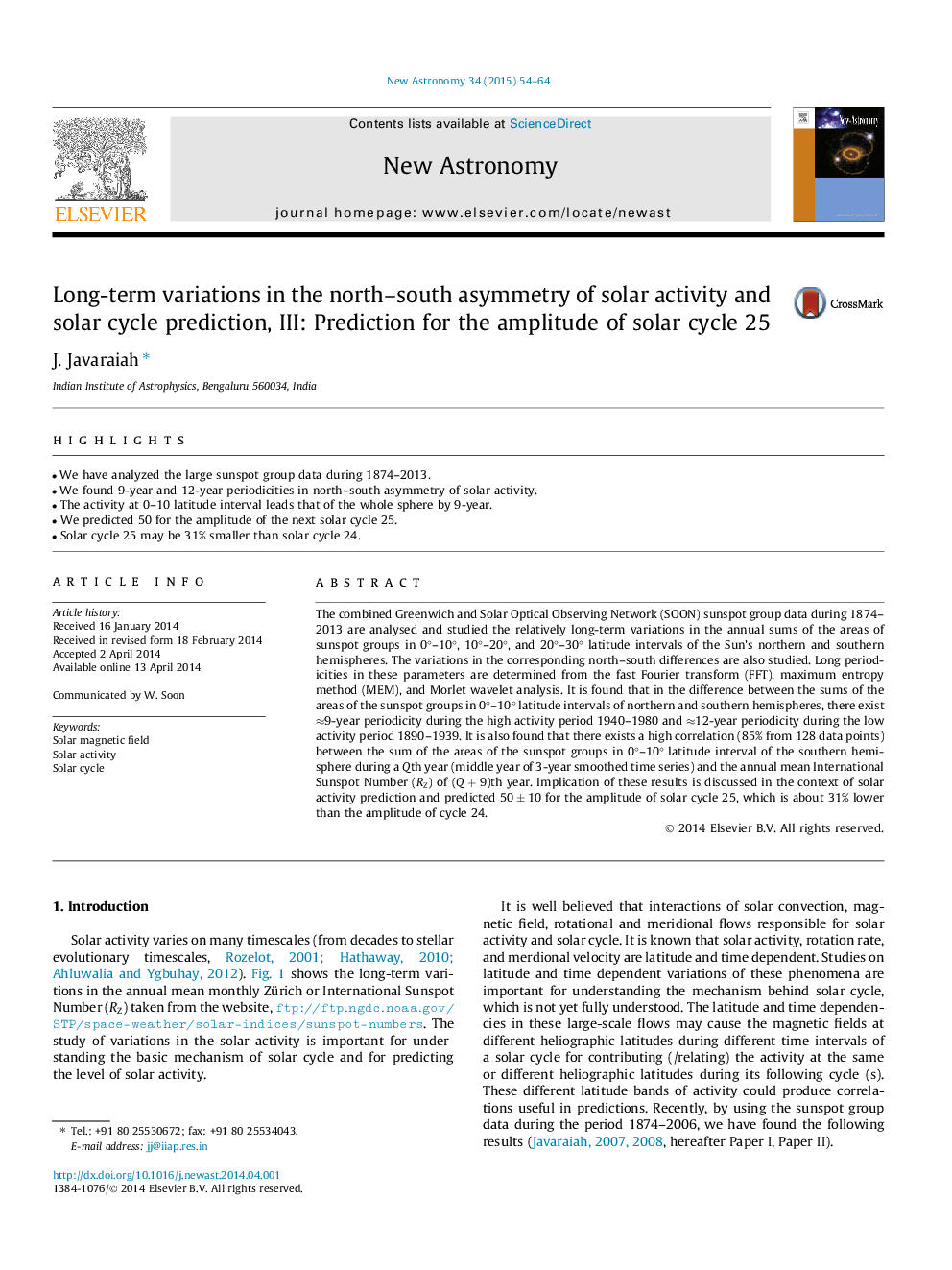| Article ID | Journal | Published Year | Pages | File Type |
|---|---|---|---|---|
| 1778959 | New Astronomy | 2015 | 11 Pages |
•We have analyzed the large sunspot group data during 1874–2013.•We found 9-year and 12-year periodicities in north–south asymmetry of solar activity.•The activity at 0–10 latitude interval leads that of the whole sphere by 9-year.•We predicted 50 for the amplitude of the next solar cycle 25.•Solar cycle 25 may be 31% smaller than solar cycle 24.
The combined Greenwich and Solar Optical Observing Network (SOON) sunspot group data during 1874–2013 are analysed and studied the relatively long-term variations in the annual sums of the areas of sunspot groups in 0°–10°, 10°–20°, and 20°–30° latitude intervals of the Sun’s northern and southern hemispheres. The variations in the corresponding north–south differences are also studied. Long periodicities in these parameters are determined from the fast Fourier transform (FFT), maximum entropy method (MEM), and Morlet wavelet analysis. It is found that in the difference between the sums of the areas of the sunspot groups in 0°–10° latitude intervals of northern and southern hemispheres, there exist ≈≈9-year periodicity during the high activity period 1940–1980 and ≈≈12-year periodicity during the low activity period 1890–1939. It is also found that there exists a high correlation (85% from 128 data points) between the sum of the areas of the sunspot groups in 0°–10° latitude interval of the southern hemisphere during a Q th year (middle year of 3-year smoothed time series) and the annual mean International Sunspot Number (RZRZ) of (Q+9Q+9)th year. Implication of these results is discussed in the context of solar activity prediction and predicted 50±1050±10 for the amplitude of solar cycle 25, which is about 31% lower than the amplitude of cycle 24.
